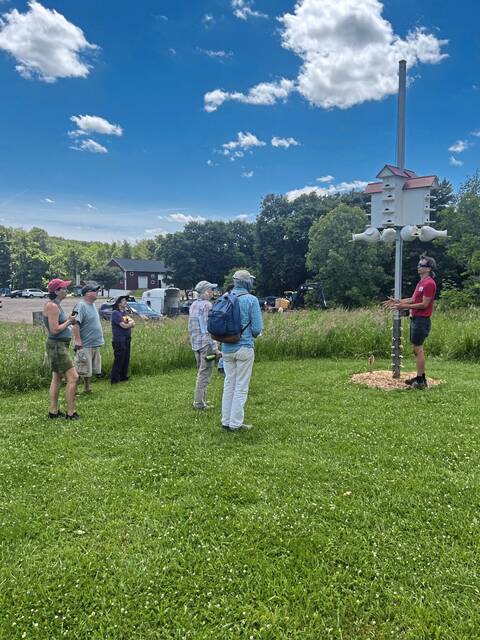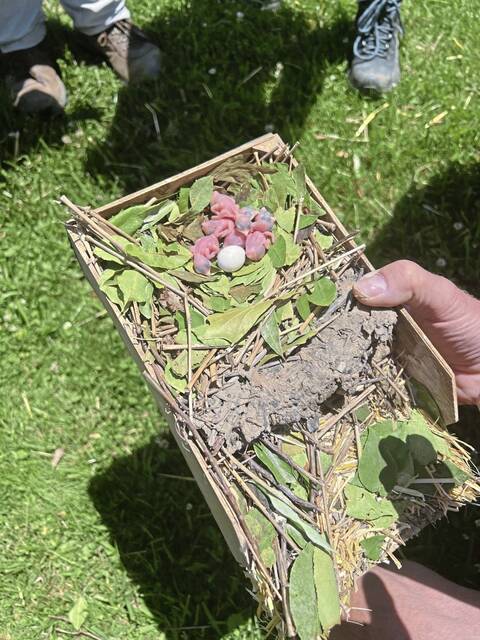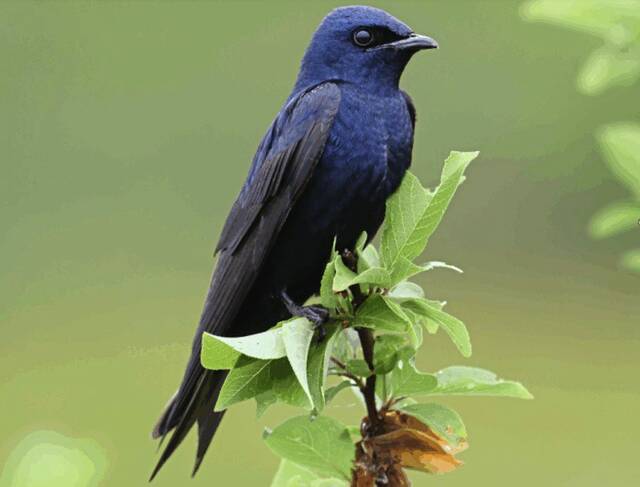Free program on purple martins hosted at Harrison Hills, home to only colony in Allegheny County Parks
Harrison resident Ken Kostka has worked for years to revitalize the region’s colony of purple martins — the species of bird that vanished from Western Pennsylvania after Tropical Storm Agnes in 1972.
His efforts have taken flight.
Harrison Hills, the 500-acre park off Freeport Road, is home to the only colony of Purple Martins in Allegheny County’s nine-park system.
The birds will be on display Sunday during a free presentation by the Friends of Harrison Hills advocacy group. The program starts at 1 p.m. near the Environmental Learning Center.
“We’ll walk over to the bird houses and we’ll get to open a tray and see the hatchlings,” said Dave Brooke, a member of the Friends group.
“Ours is one of the few publicly accessible colonies in the region.”
Purple martins are songbirds native to North and South America. They spend winters in the Amazon and return to the U.S. each spring.
At Harrison Hills, their digs are especially cozy.
Purple martins rely almost exclusively on human-provided housing in the Midwest and along the East Coast, according to the nonprofit Purple Martin Conservation Association.
Because they no longer nest in natural cavities like tree trunks, the birds rely on human intervention, according to the website.
Brooke and Kostka spend several days each spring hand-feeding the returning birds to ensure they make it through cold and rainy weather.
“They eat flying insects. So if the weather isn’t good, there’s no food,” Brooke said. “Some people have been known to throw crickets up in the air to feed them.
“Ken and I use plastic spoons to fling scrambled eggs for them to snatch mid-air. It’s a great source of protein for them.”
Kostka has been enamored with the purple martin species since he was a teen. His goal was to re-establish a colony in Natrona Heights. That eventually led to him installing an elaborate Amish-made birdhouse at Harrison Hills.
He used decoys to entice the birds and in 2015, drew three pairs of purple martins to nest in the park.
It was a strong start that in 10 years has grown to include more than 40 pairs of birds. Kostka hopes to eventually repopulate neighboring communities.
Each pair lays up to seven eggs a year.
“That’s a lot of purple martins getting hatched here,” Brooke said.
The program on Sunday will give participants a rare glimpse into the nests along with a brief history of the colony. The group offers one presentation each summer.
“It’s a good opportunity for people to see them up close,” Brooke said.
Tawnya Panizzi is a TribLive reporter. She joined the Trib in 1997. She can be reached at tpanizzi@triblive.com.
Remove the ads from your TribLIVE reading experience but still support the journalists who create the content with TribLIVE Ad-Free.



